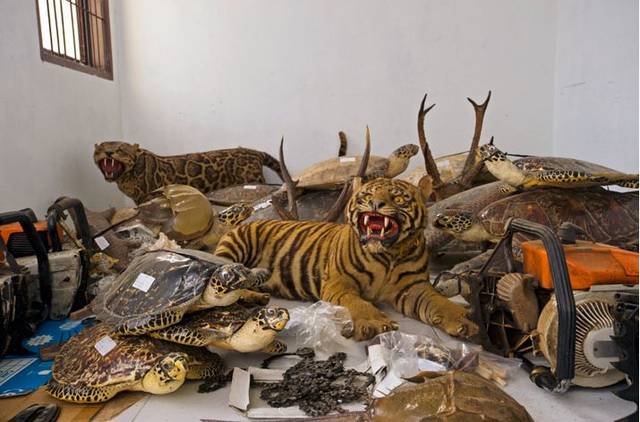
Bryan Christy writes in the January issue of National Geographic about a notorious animal smuggler.
It took the undercover unit of the US Fish & Wildlife Service five years to track down Anson Wong, the world's most wanted smuggler of endangered species. But he got out of prison in 47 months, during which time his wife kept the business going full force. And when Wong got out of prison he set his sights on a 'new wildlife venture, a zoo that promises to be his most audacious enterprise yet' -- smuggling tigers.
Christy tells the story of how the Fish & Wildlife Special Ops team set up a sting operation to capture Wong, who boasted of having horns of Sumatran and Javanese rhinoceroses, both forbidden Appendix I animals. He talked openly about getting shahtoosh, the 'king of wool,' from the Tibetan antelope. He had access to extraordinary birds, including the Rothschild's mynah, whose wild population was estimated to number fewer than 150. He bragged about his Spix's macaws, a bird now believed to be extinct in the wild, claiming he'd recently sold three. The black market rate for a Spix's macaw was $100,000. His expanding list of astonishing illegal rarities included panda skins and snow leopard pelts."
While no one knows exactly how large the illegal wildlife trade is, this much is certain: It's extraordinarily lucrative. Profit margins are the kind drug kingpins would kill for. Smugglers evade detection by hiding illegal wildlife in legal shipments, they bribe wildlife and customs officials, and they alter trade documents. Few are ever caught, and penalties are usually no more severe than a parking ticket. Wildlife trafficking may very well be the world's most profitable form of illegal trade, bar none.

No comments:
Post a Comment